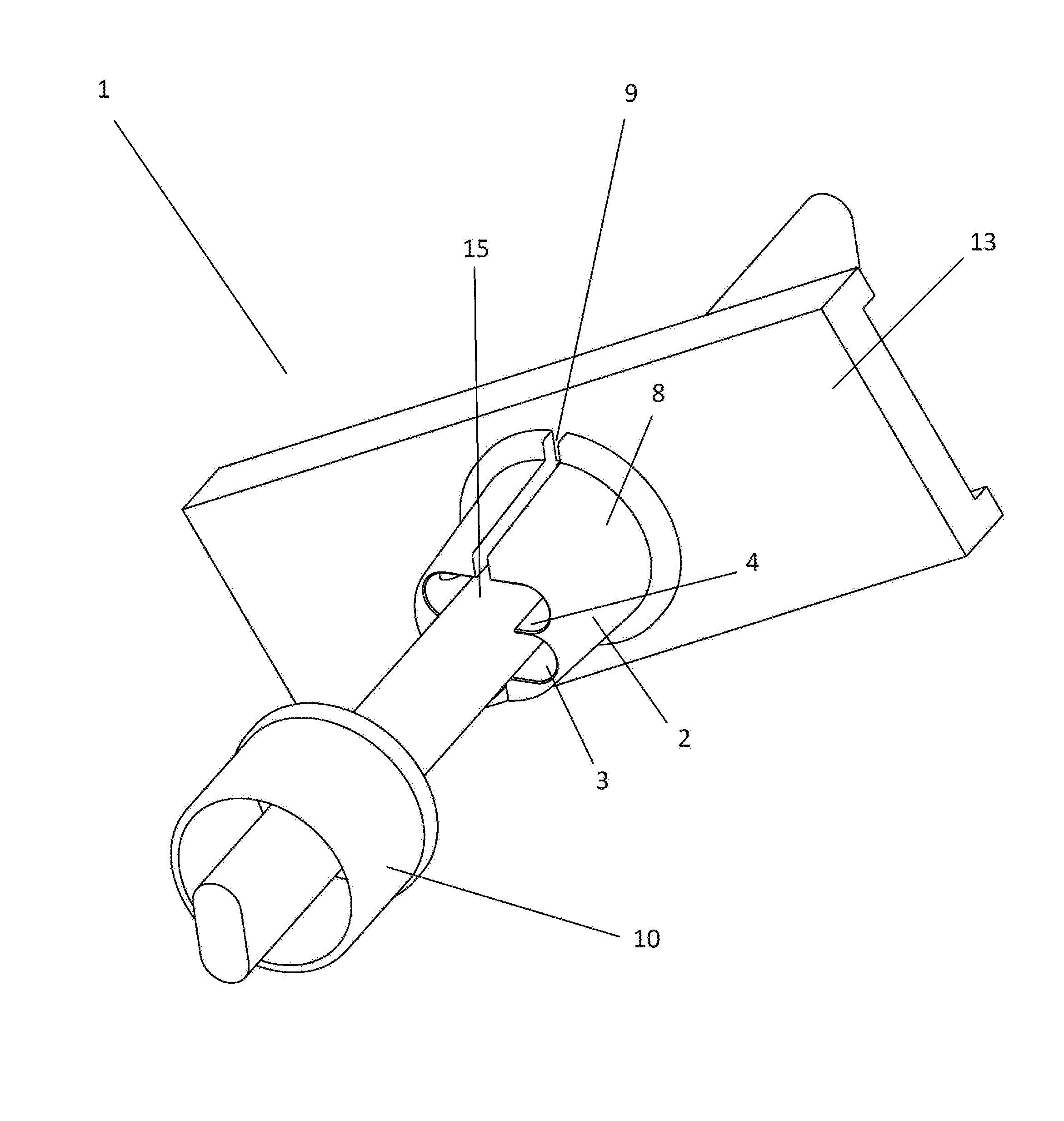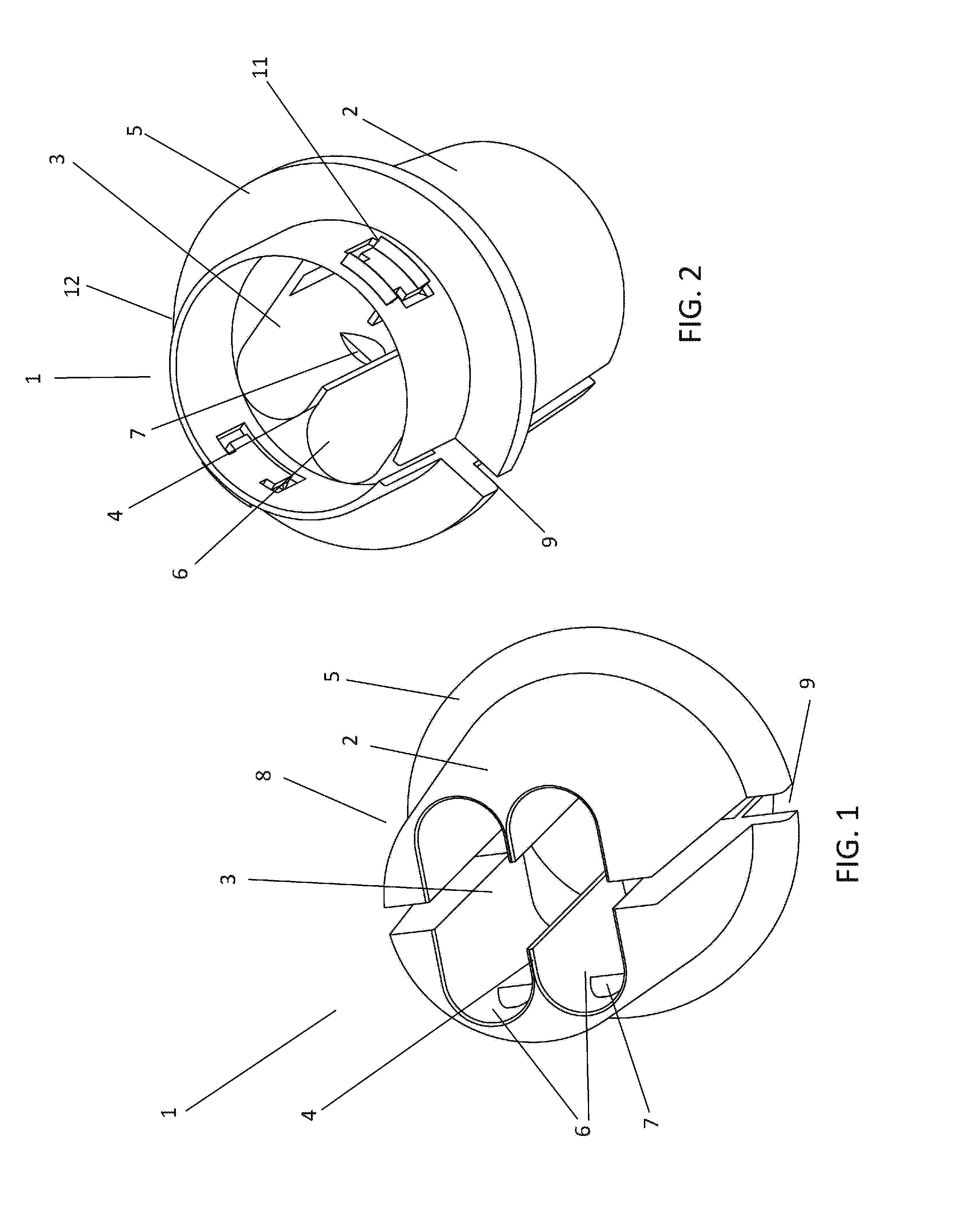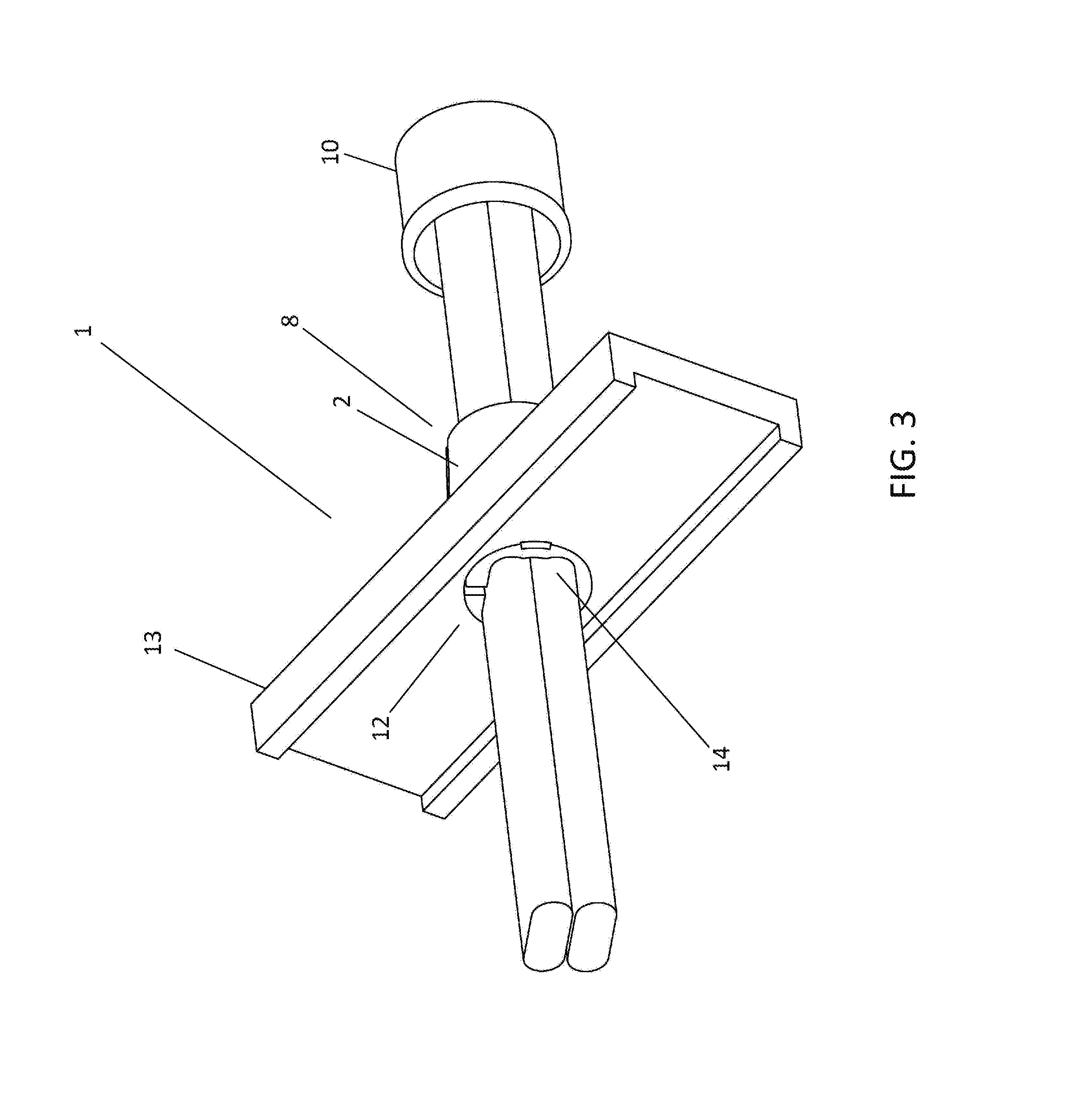Nonmetallic push-in connector
- Summary
- Abstract
- Description
- Claims
- Application Information
AI Technical Summary
Benefits of technology
Problems solved by technology
Method used
Image
Examples
Embodiment Construction
[0026]Referring now to the invention in more detail, FIGS. 1 and 2 show perspective views of an embodiment of the disclosed connector. More specifically, the push-in connector, generally 1, has a body 2. Note, those skilled in the art can immediately appreciate that the body of the connector can be any shape needed to fit into an electrical housing. Since most electrical housings for residential electrical enclosures and lighting fixtures have circular knock-outs, the connector body 2 is shown to be generally cylindrical. FIG. 1 is a perspective view showing the feed end 8 of the connector. FIG. 2 is a perspective view showing the lead-in end of the connector 1. The connector body 2 has an interior channel 3 running the longitudinal length of the connector body 2. In one embodiment of the disclosed connector, the interior channel 3 of the connector body 2 contains one or more longitudinal protrusions 4. The longitudinal protrusions 4 extend longitudinally along at least part of the ...
PUM
 Login to View More
Login to View More Abstract
Description
Claims
Application Information
 Login to View More
Login to View More - R&D
- Intellectual Property
- Life Sciences
- Materials
- Tech Scout
- Unparalleled Data Quality
- Higher Quality Content
- 60% Fewer Hallucinations
Browse by: Latest US Patents, China's latest patents, Technical Efficacy Thesaurus, Application Domain, Technology Topic, Popular Technical Reports.
© 2025 PatSnap. All rights reserved.Legal|Privacy policy|Modern Slavery Act Transparency Statement|Sitemap|About US| Contact US: help@patsnap.com



